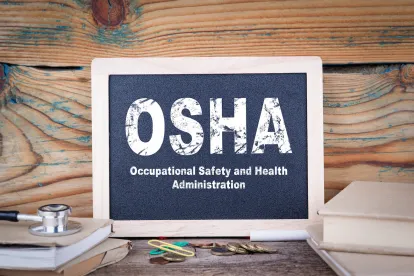SB 606, which took effect January 1, 2022, greatly increases the California Division of Occupational Safety and Health’s (“Cal/OSHA’s”) enforcement powers by creating two new violation categories – “enterprise wide” and “egregious” violations.
Enterprise Wide Violations
The new law creates a rebuttable presumption that an employer with multiple worksites commits an “enterprise wide” violation if (i) it has a written policy or procedure which violates Cal/OSHA’s rules and regulations, or (ii) there is evidence of a pattern or practice of the same violation(s) committed by the employer and which involve more than one of the employer’s worksites.
Due to the rebuttable presumption, an employer with multiple worksites will have the burden of demonstrating to Cal/OSHA that its other worksites have distinct, compliant written policies and/or practices when Cal/OSHA determines a violation has occurred. If the employer is unable to rebut the presumption, Cal/OSHA may issue an enterprise-wide citation requiring enterprise-wide abatement. For example, a flawed policy or procedure in an employer’s COVID-19 prevention program could result in significantly increased fines if the employer uses an equivalent program or policy throughout its California worksites.
Additionally, whereas Cal/OSHA could previously only seek an injunction if the at-issue condition of any employment constituted a “serious menace” to the lives or safety of persons about it, the new law authorizes Cal/OSHA to seek an injunction restraining certain uses or operations of employment if it has grounds to issue a citation based on enterprise wide violations.
Egregious Violation
The second category set forth by the new law is “egregious violations.” Cal/OSHA can issue a citation for an egregious violation if it determines that one or more of the following is true:
-
The employer, intentionally through conscious, voluntary action or inaction, made no reasonable effort to eliminate a known violation;
-
Violations resulted in worker fatalities, three or more hospitalizations, or a large number of injuries or illnesses;
-
Violations resulted in persistently high rates of worker injuries or illnesses;
-
An employer has an extensive history of prior violations;
-
An employer has intentionally disregarded its health and safety responsibilities;
-
An employer’s conduct amounts to clear bad faith in the performance of its duties; or
-
An employer has committed a large number of violations so as to undermine significantly the effectiveness of any safety and health program that may be in place.
Each employee exposed to an egregious violation will be considered a separate violation for purposes of the issuance of fines and penalties. This provision could result in substantial penalties for employers who are found to have engaged in egregious violations.
Actions for Employers
Employers should carefully review their safety policies, procedures, and practices to confirm compliance with Cal/OSHA rules and regulations, especially if employers have multiple worksites in California. Employers should also carefully scrutinize any safety policies that apply across worksites, and consider differentiating particular policies based upon location if appropriate.






 />i
/>i

